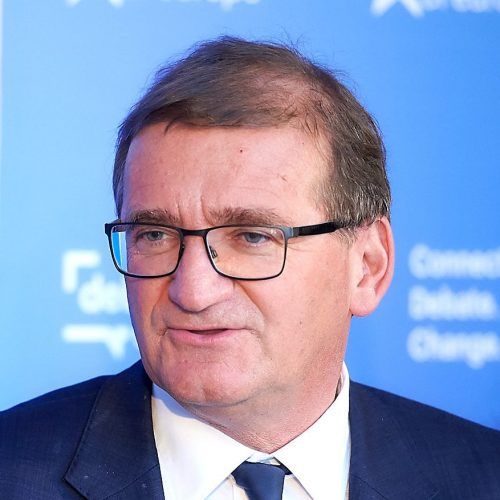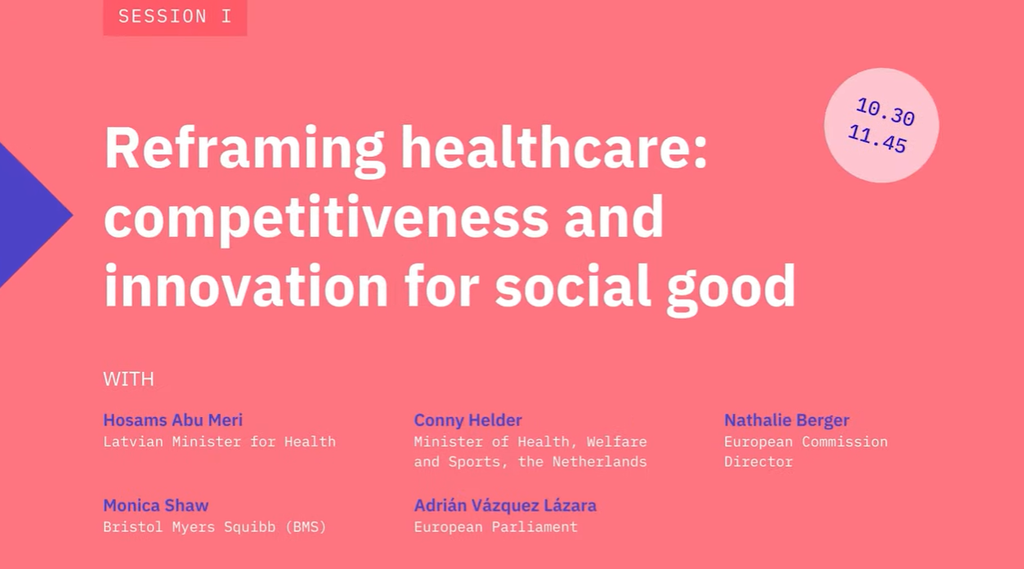Europe's moment: advancing clinical research and health innovation
Next event In person & online

- Area of Expertise
- Sustainable Livelihoods
Sustainable Livelihoods

Corporate Vice-President of EMEA, Canada, Latin America, Japan and Asia Pacific at Edwards Lifesciences
The COVID-19 health crisis has highlighted the improvements that can be made in the way we manage our hospitals and healthcare systems. The pandemic has shown us the importance of strengthening the resilience of vulnerable populations, especially the elderly and those suffering from cardiovascular disease.
According to WHO Europe, 65% of COVID patients who have passed away had some form of cardiovascular disease. Moreover, rates of cardiovascular diseases, including heart failure, atrial fibrillation-related stroke, heart valve disease and coronary heart disease, increase with age. In 2040, 155 million Europeans will be over 65; the scale of the problem will only be exacerbated as the continent faces an ageing demography.
Yet, COVID-19 does not need to be an inevitable cause of mortality for cardiovascular patients. Equally, we should challenge the misconception that an ageing demographic is necessarily negative. While it is deeply regrettable that many lives were lost during this tragic crisis, we should seize the opportunity to rethink our healthcare systems in a way that better protects the health of our elderly citizens in the future.
During the first wave of the pandemic, we witnessed a 50% decrease in the number of people with symptoms of heart-related diseases checking into hospitals.
Smart investment in innovation can help to reduce the hospital footprint, improve patient care, and transform healthcare
We should not deny our senior populations urgent treatment for conditions such as structural heart disease, as this will only magnify the health crisis. In fact, treating such patients has a twin-effect; it brings them curative relief from their symptoms – while continuing to provide them with a good quality of life – and it builds their individual resilience against the threat of the pandemic.
Moreover, a recent survey from the Global Heart Hub showed that older people are significant contributors to our societies as charitable volunteers and carers. The positive role these senior people play is a great example of active and healthy ageing that benefits our families, communities and economies.
If we are to reap the benefits of active and healthy ageing, we need a coordinated and consistent approach. Indeed, Ursula von der Leyen’s, call for a stronger European Health Union fits perfectly with this approach. It is time to draw the first lessons from the health crisis, one of which is that smart investment in innovation can help to reduce the hospital footprint, improve patient care, and transform healthcare. We know the issues that confront us and now we have the necessary funding, provided in the EU Next Generation Recovery Plan.
Many of the latest innovative procedures for structural heart diseases are minimally invasive. They involve shorter hospital stays, limit the potential spread of infections and reduce recovery times. As a consequence, hospital systems can treat and discharge patients more rapidly. Many hospitals have taken this approach during the COVID-19 pandemic in order to clear waiting lists of untreated patients and to avoid spreading the virus. Whatever the ‘new normal’ maybe, this approach should be central to patient care.
Structural heart diseases have no borders, and nor should our treatment of them
Digitalisation can also play an important role in building efficiency. For instance, heart failure patients can be monitored remotely, allowing unnecessary hospital appointments to be avoided and enabling rapid intervention. Whilst respecting privacy, Big Data analysis opens up many additional benefits, including predictive monitoring of patients in the operating room, which can reduce complications, hospital stays and costs.
Structural heart diseases have no borders, and nor should our treatment of them. Just imagine what can be achieved for healthcare systems if we can reap the benefits of smart investment in innovation across the EU.
To make this a reality, we should develop a European Joint Action on Structural Heart Diseases to prioritise detection and early diagnosis, while fostering harmonised data collection to improve our understanding of these ailments. Bringing together member states and key health stakeholders, the Joint Action would facilitate the re-thinking of a patient-centred care pathway, whilst reducing overall hospital footprints.
The people who benefit most from this rethinking of healthcare systems will be patients, especially our older citizens. We can increase their resilience to epidemics and pandemics, improve their health outcomes, preserve and improve their quality of life and allow them to enjoy healthy ageing while contributing to our economies, families and communities.
Next event In person & online

Past event In person & livestreamed

Past event In person

Past event In person & livestreamed





Stay informed
We use cookies and similar technologies to adjust your preferences, analyze traffic and measure the effectiveness of our campaigns. Learn more about our privacy policy.